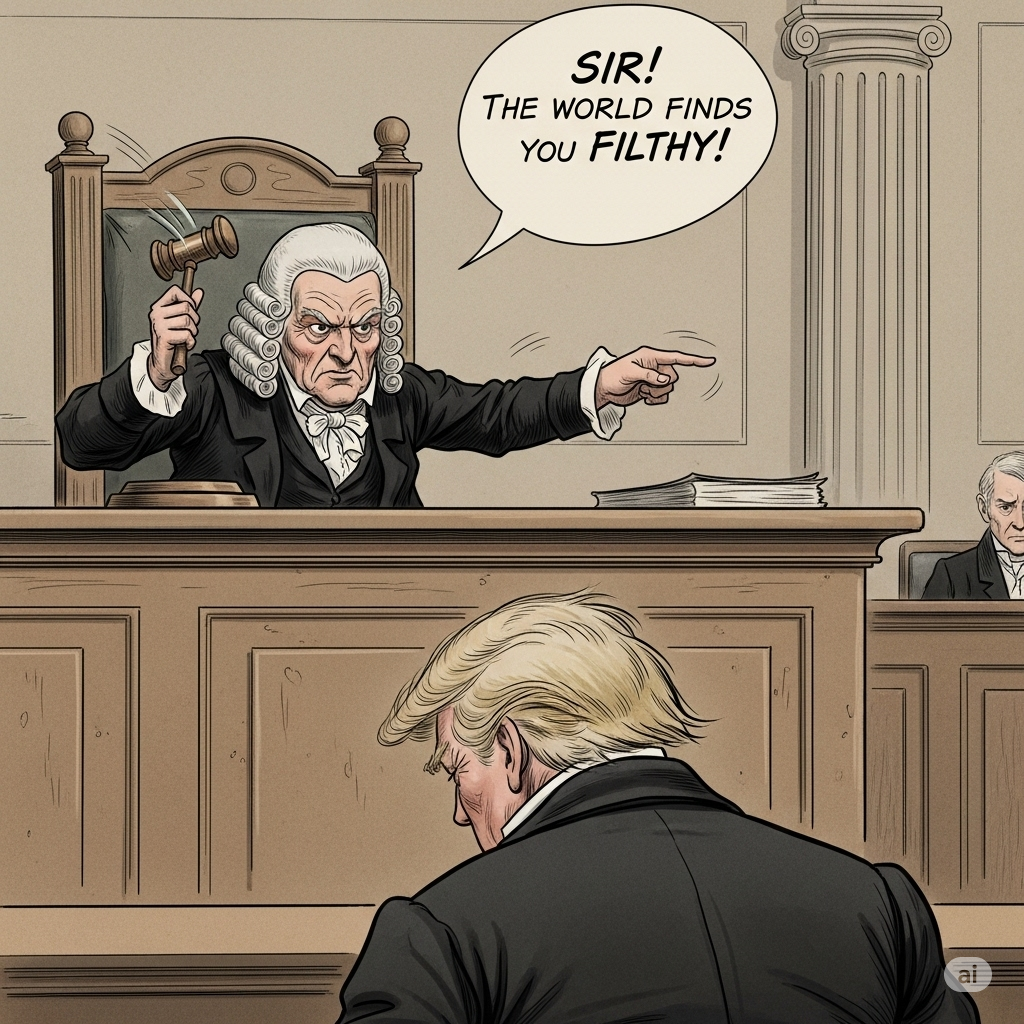This post presents twelve points of evidence concerning Donald Trump’s connections to Jeffrey Epstein and Ghislaine Maxwell, as well as reported allegations of sexual assault on minors, including Katie Johnson (also identified as Jane Doe), and incidents related to his beauty pageants. Each point represents information that has emerged and been discussed in various contexts, forming part of the broader body of evidence surrounding these matters.
Twelve Points of Evidence
The Trump Epstein Brotherhood
1. Social Relationship: Donald Trump and Jeffrey Epstein shared a social connection that began in the late 1980s and continued into the early 2000s. They were photographed together at various social events, including gatherings held at Trump’s Mar-a-Lago club, which Trump purchased in 1985 and opened as a club in 1994. This social relationship is a point of evidence in understanding their association.
2. Private Jet Flights: Donald Trump’s name appears on Jeffrey Epstein’s private jet flight logs for at least seven domestic flights between 1993 and 1997. These flights included family members, such as his then-wife Marla Maples and their daughter Tiffany, along with a nanny. These flight records serve as concrete points of evidence of their travel together.
3. “Birthday Book” Letter: A “birthday book,” compiled by Ghislaine Maxwell for Epstein’s 50th birthday in 2003, contained a letter signed by Donald Trump. The letter was described as “bawdy,” presented in a script format, and featuring the outline of a nude woman with Trump’s signature, “Donald,” mimicking pubic hair. The script included a dialogue between “Donald” and “Jeffrey” about life, secrets, and friendship. The existence and content of this letter serve as a point of evidence regarding their interaction.
4. Public Comments on Epstein: In a 2002 interview, Trump referred to Epstein as a “terrific guy” and “a lot of fun to be with.” He also added, “It is even said that he likes beautiful women as much as I do, and many of them are on the younger side.” These public statements are points of evidence reflecting Trump’s past views on Epstein.
5.Name in Epstein Files: U.S. Attorney General Pam Bondi informed Donald Trump in May 2025 that his name appeared multiple times in the Justice Department’s investigative files related to Jeffrey Epstein. This presence in official investigative files is a point of evidence.
6. Maria Farmer’s Allegations: Artist Maria Farmer, an alleged victim of Epstein and Maxwell, reported to law enforcement in both 1996 and 2006 regarding Epstein’s alleged abuse and the powerful individuals associated with him, including Donald Trump. Farmer recounted an incident in 1995 at Epstein’s Manhattan office where Trump allegedly stared at her legs until Epstein intervened, stating, “No, no. She’s not here for you.” Farmer did not accuse Trump of criminal behavior. These reported allegations from a named individual constitute points of evidence.
Allegations of Sexual Assault on Minors (Katie Johnson / Jane Doe)
7. Lawsuit Allegations: In 2016, a woman identified by the pseudonyms “Katie Johnson” and “Jane Doe” filed civil lawsuits accusing Jeffrey Epstein and Donald Trump of sexually assaulting her when she was 13 years old. The lawsuits alleged that she was lured to parties hosted by Epstein in Manhattan in 1994 with promises of a modeling career. During these parties, she claimed both Trump and Epstein raped, sexually assaulted, threatened, and forcibly imprisoned her. The formal lodging of these specific allegations in a civil lawsuit is a significant point of evidence.
8. Specific Incident Detail in Lawsuit: The lawsuit detailed one alleged incident where Trump tied her to a bed, exposed himself, and forcibly raped her despite her pleas to stop. He allegedly responded by striking her face and screaming he would do “whatever he wanted.” Following this alleged rape, Trump reportedly threatened her and her family with physical harm or death if she ever revealed details of the abuse. These detailed claims from the lawsuit serve as points of evidence.
9. Corroborating Witness Accounts in Lawsuit: The New York lawsuit included an affidavit from an anonymous witness, “Tiffany Doe,” who allegedly helped procure underage girls for the parties and corroborated the charges of “rape” and “battery and assault.” Another anonymous witness, “Joan Doe,” a classmate of the alleged victim, stated that the plaintiff told her about sexual contact with the defendants at parties in New York City during the summer of 1994. These supporting witness statements within the legal filing are points of evidence.
10. Lawsuit Withdrawal: The lawsuit was abruptly dropped in November 2016, with her attorney stating “Jane Doe” had received numerous threats and was “too afraid to show her face.” The circumstances of the lawsuit’s withdrawal are points of evidence in the overall context.
Allegations Related to Trump’s Teen Pageants
11. Entering Dressing Rooms: Several former Miss USA and Miss Teen USA contestants have publicly accused Donald Trump of entering their dressing rooms while they were in various stages of undress during his ownership of the pageants (1996-2015). For instance, Tasha Dixon stated that Trump “just came strolling right in” during a dress rehearsal when contestants were “half naked changing into our bikinis.” Trump himself confirmed this behavior in a 2005 interview, stating that as the owner, he was “allowed to go in because I’m the owner of the pageant… And I sort of get away with things like that.” Mariah Billado recalled Trump walking into the dressing room and saying, “Don’t worry ladies, I’ve seen it all before.” Bridget Sullivan stated that Trump walked backstage while many contestants were naked or getting dressed, and Victoria Hughes also confirmed Trump’s presence backstage. These consistent accounts from multiple individuals and Trump’s own statements are points of evidence regarding this practice.
12. “Grabbing” Allegations: Cassandra Searles alleged in a 2016 social media post that Trump “continually grabbed my ass and invited me to his hotel room” when she competed. Beatrice Keul accused Trump of “grabbing her body everywhere” and trying to lift her dress during an event for his “Donald J. Trump American Dream Pageant” in 1993. She claims he “jumped on me” and kissed her on the lips and neck, and she used her height to escape his grasp. These public allegations from named accusers serve as points of evidence in these specific claims.


